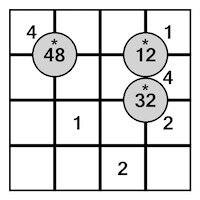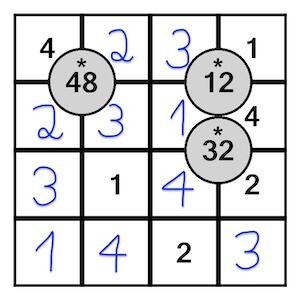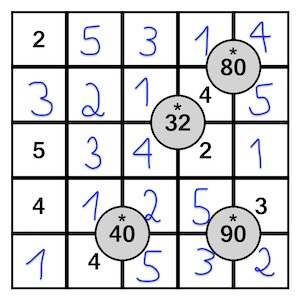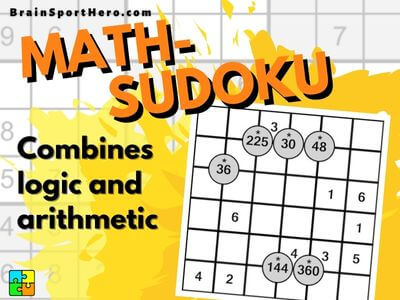The classic Sudoku tasks have little to do with arithmetic, even if the numbers 1 to 9 used in the exercises. Ultimately, it’s all about distributing the numbers across the rows and columns according to the rules. Well-known are the killer sudoku tasks, in which mostly no cells are pre-filled, but all digits have to be deduced from arithmetic tasks.
These tasks are usually quite difficult and a bit daunting for some puzzle fans due to the completely empty field. For this reason, the BrainSport.de puzzle laboratory has developed a new type of Sudoku task: Math Sudoku. The aim was to develop a type of task that combines arithmetic and Sudoku rules and can be solved more quickly thanks to smaller fields.
The usual Sudoku rules apply to the rows and columns of these tasks. In addition, there are circles that connect four cells and contain the product of the adjacent cells. Which mathematical operation is applied can be seen as a symbol in the circle.
A first example of Math Sudoku

The number 12 in the upper right circle contains the product of the four surrounding cells. The 1 and the 4 are set. So the two empty cells must result in the product 3. The cells must be filled with the digits 3 and 1. There is already a number 1 in the top line. With this information, there must be a 3 in the top line and a 1 below it.

Math Sudoku Puzzle 1
Fill in the empty cells by using the Sudoku rules:
Every row and column holds the digits exactly once. The circles give clues about the factors (*) and sums (+) of the adjacent cells.
Complete the field:

To help you with the first steps in this puzzle type we will provide some tips: Try to start with the product result 18 in den lower lines. Two factors two and one are visible. So the rest of the 18 comes down to 9, which has to be the result of exactly two missing numbers. From all possible used numbers in this exercise there is only one last possible solution for the two missing fields. When you add the cells. The fourth row has just one missing cell, which is easy to solve.
Solution for Puzzle 1

Puzzle 2

Solution for Puzzle 2

Puzzle 3

Solution for Puzzle 3

